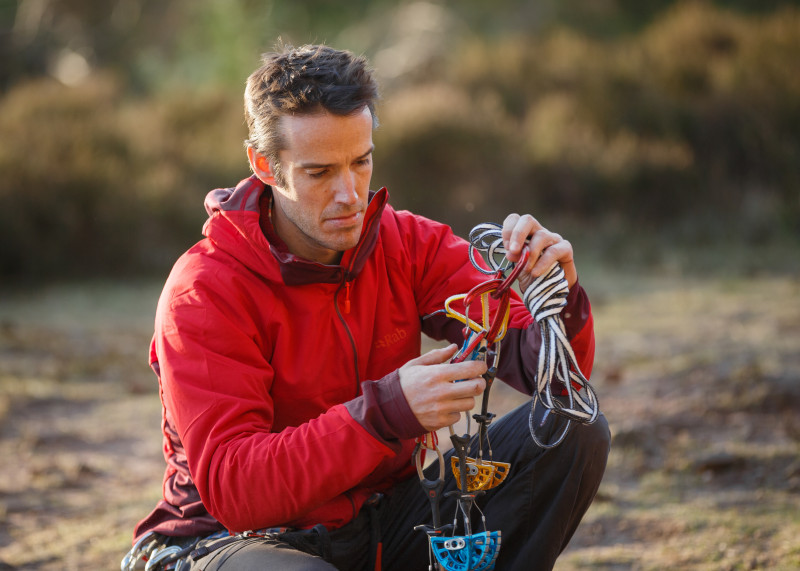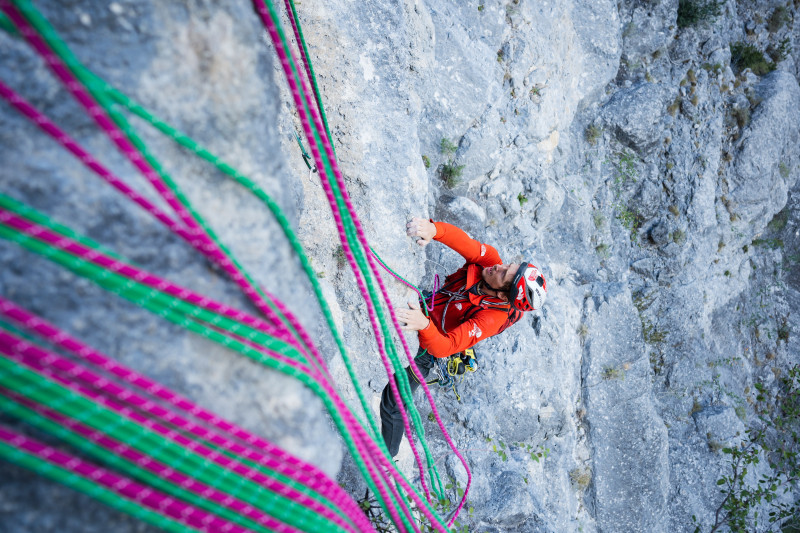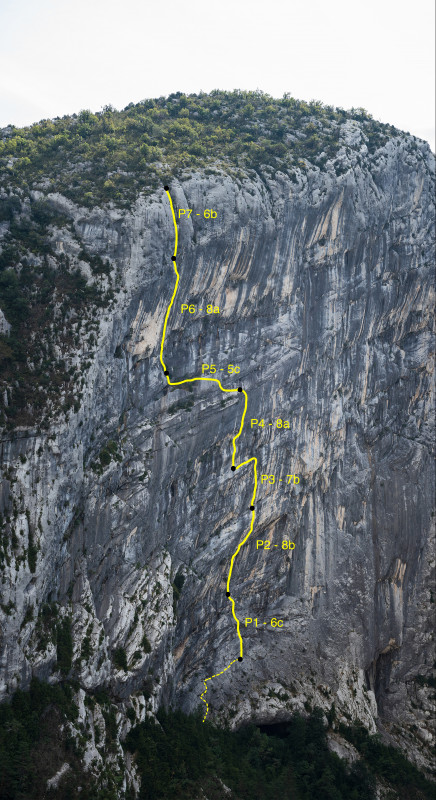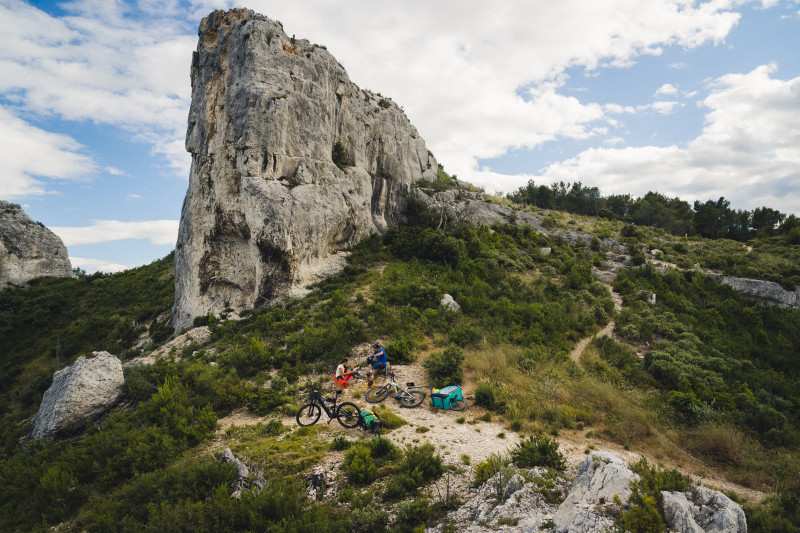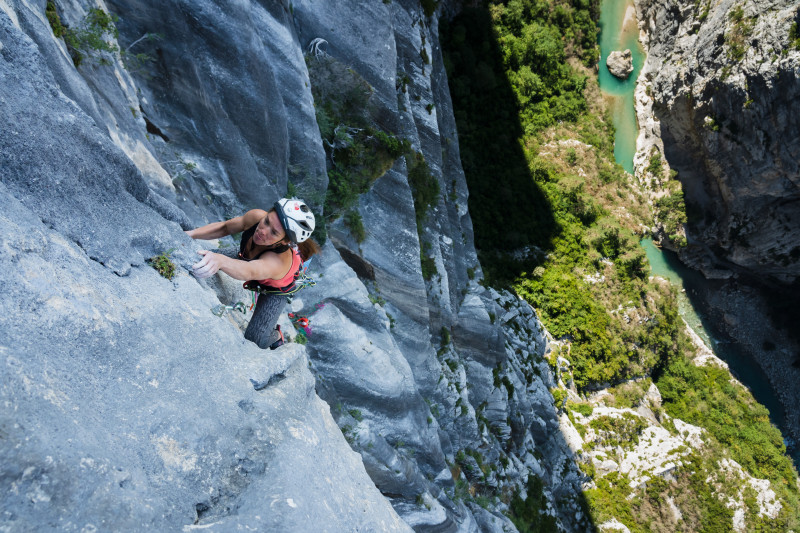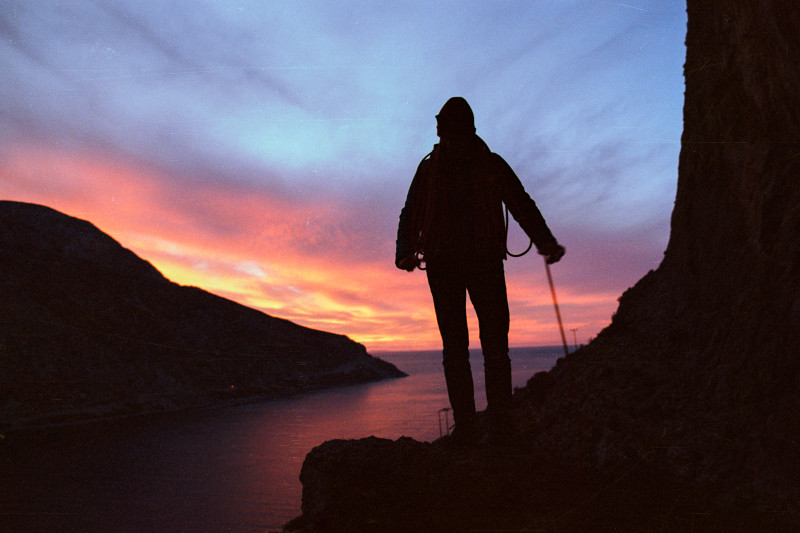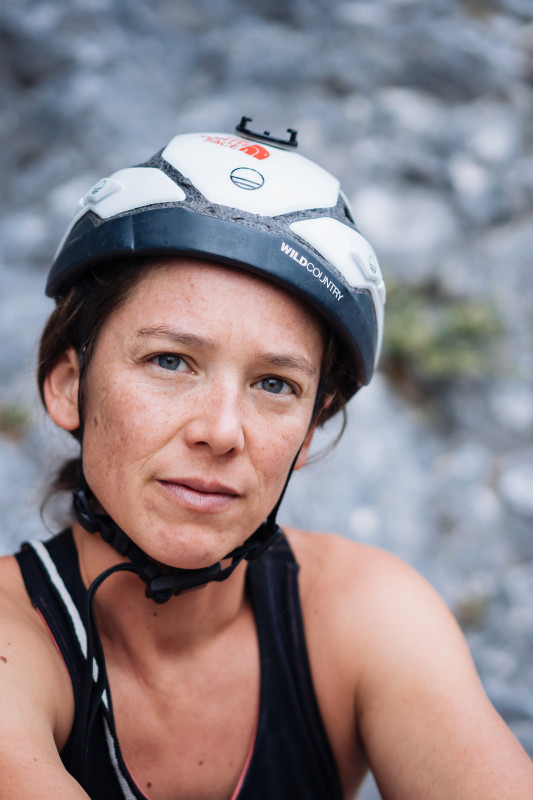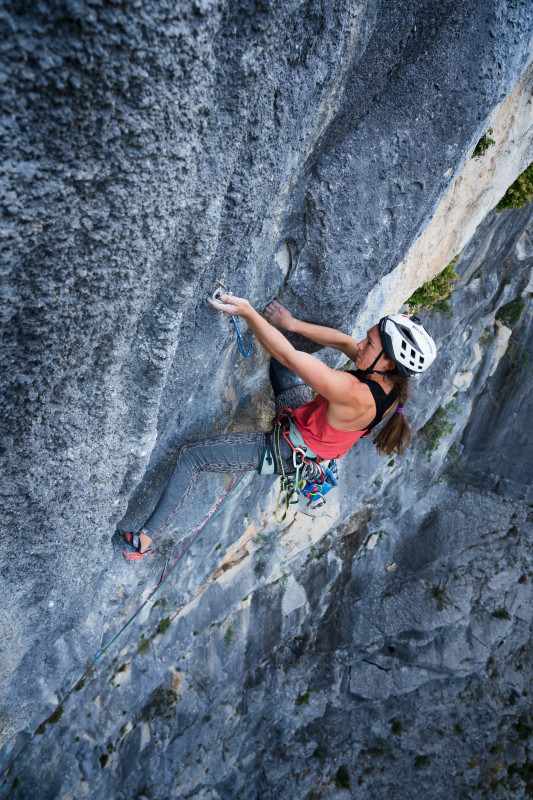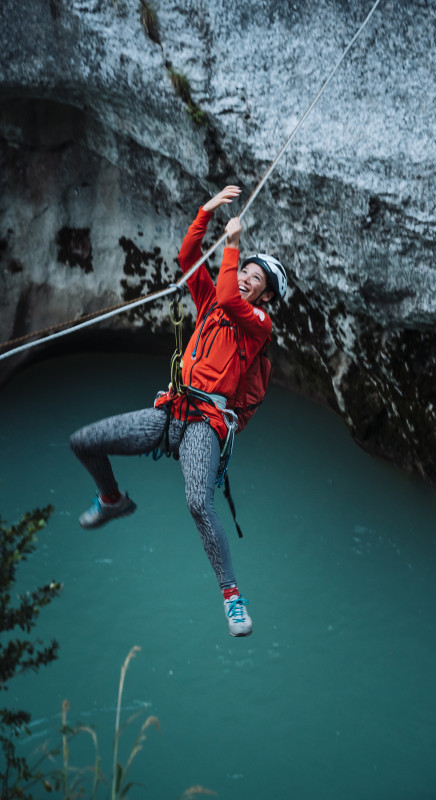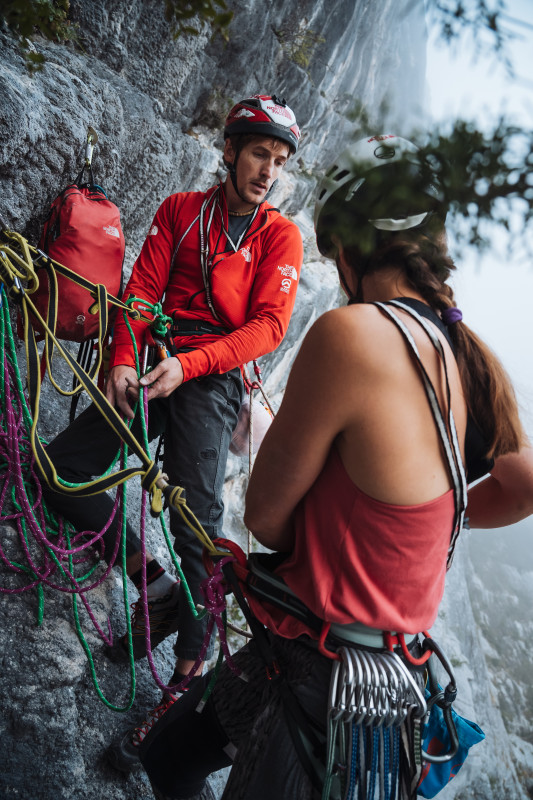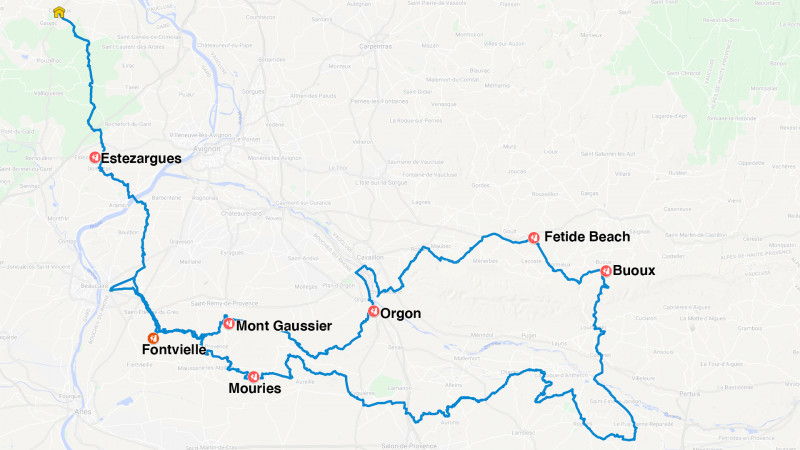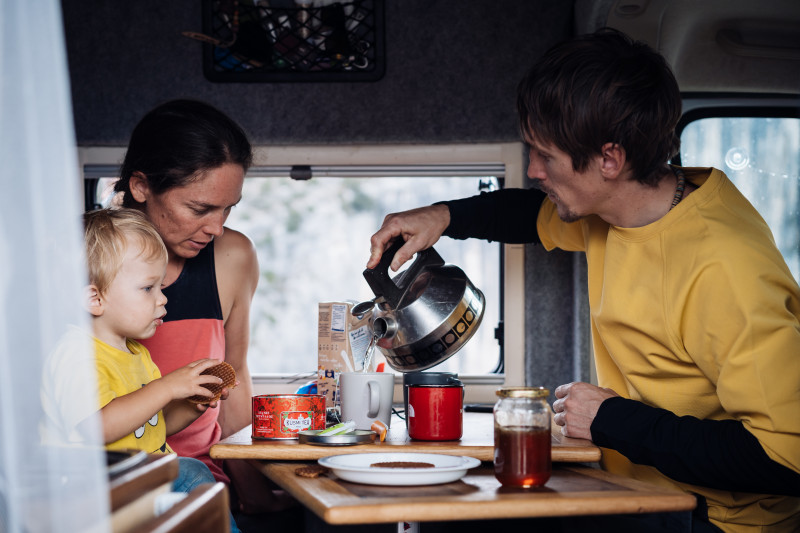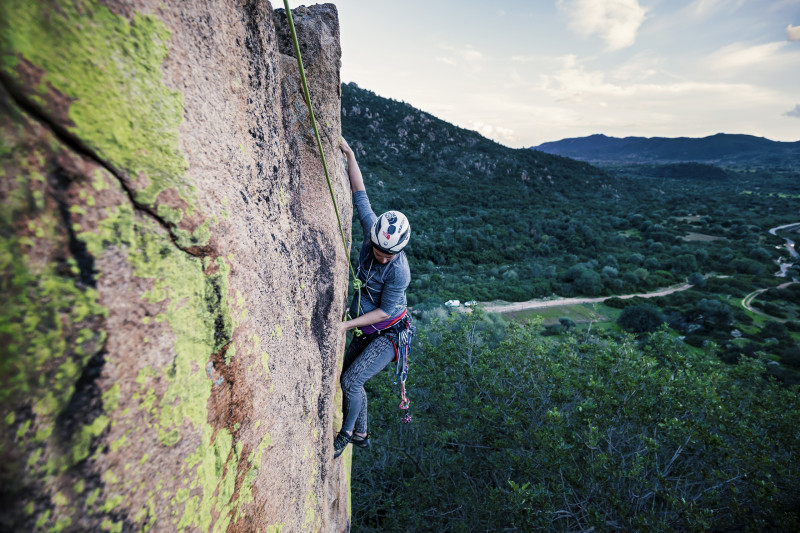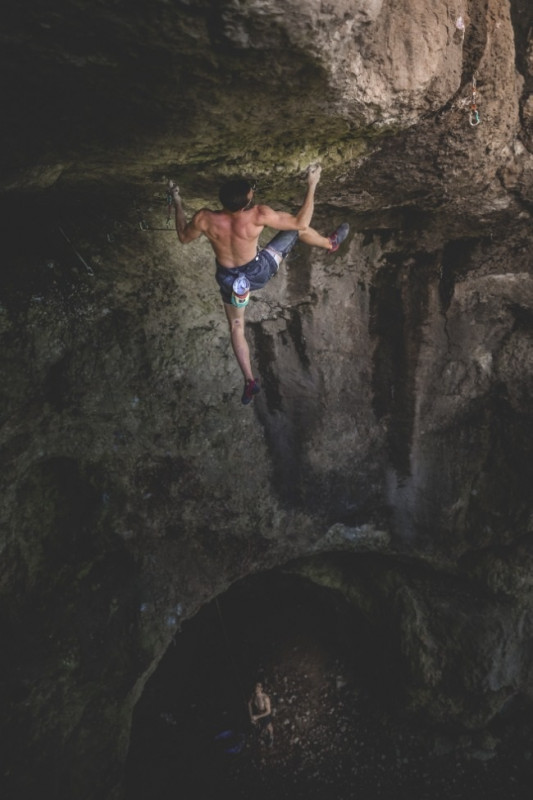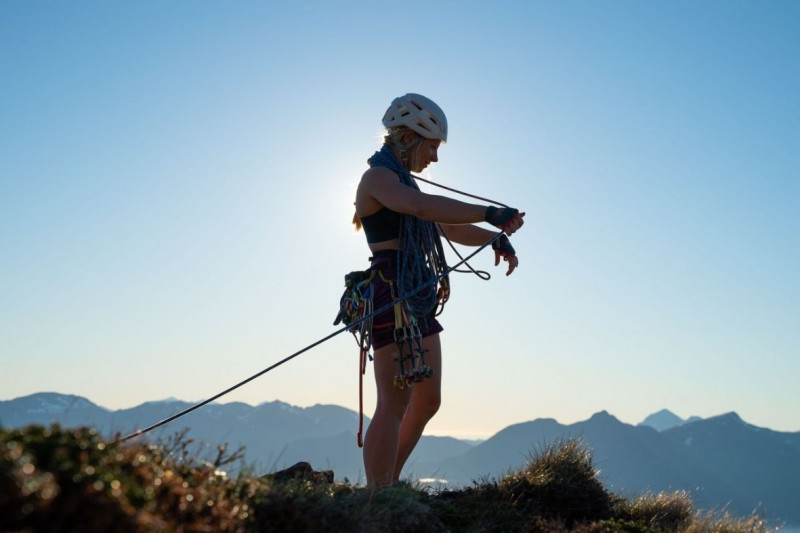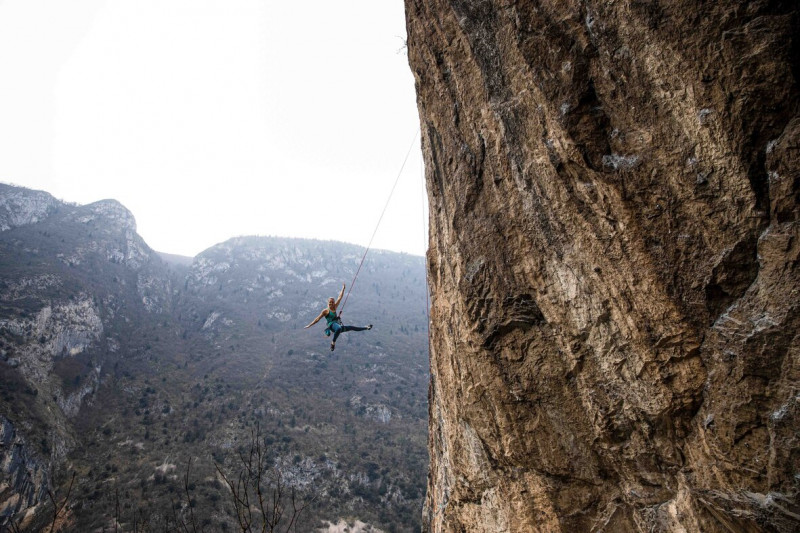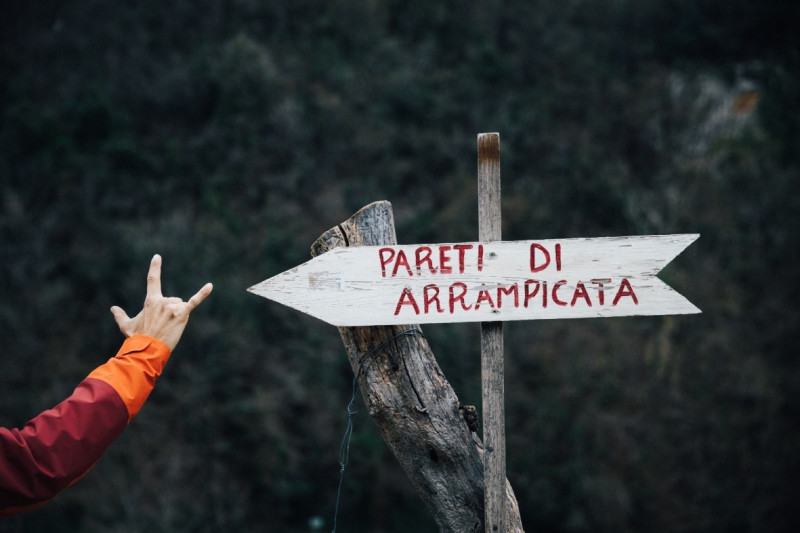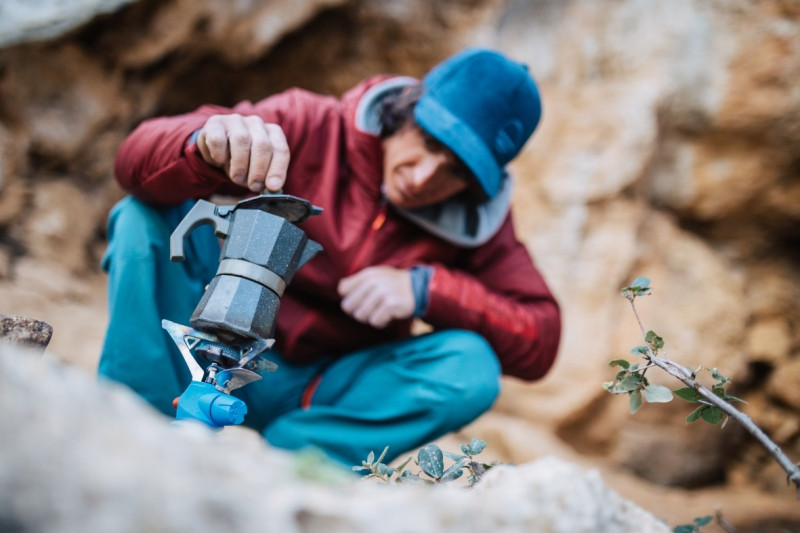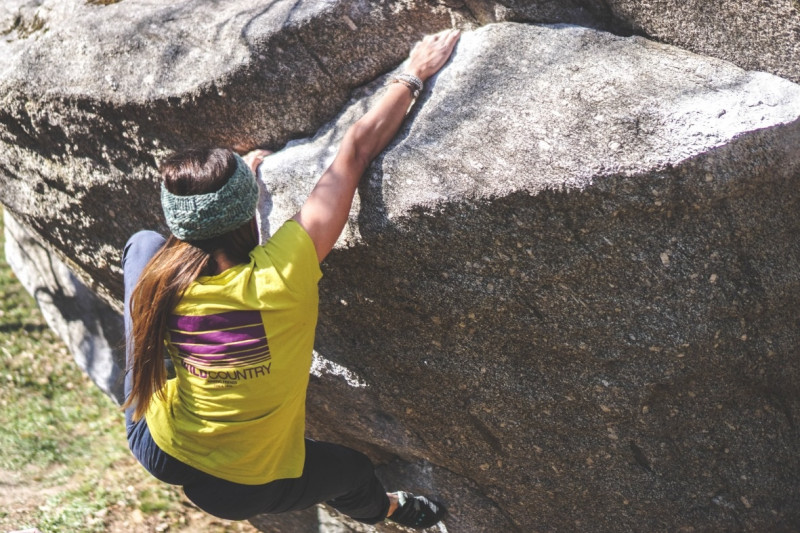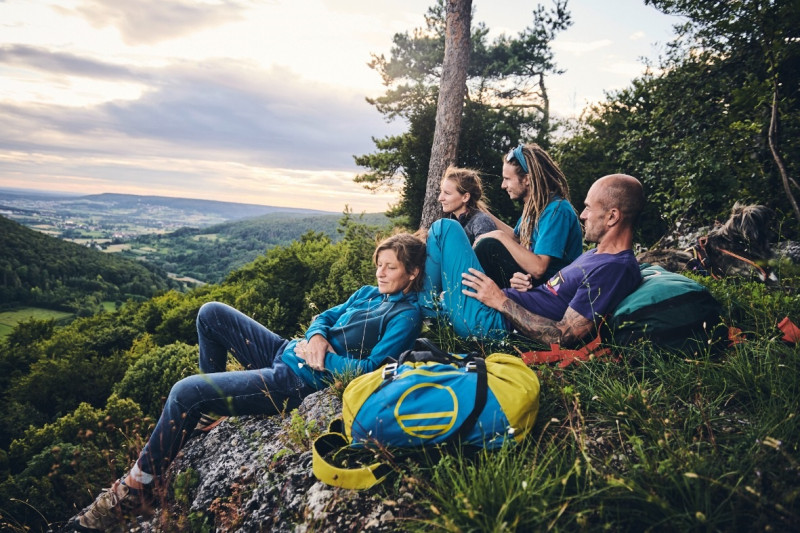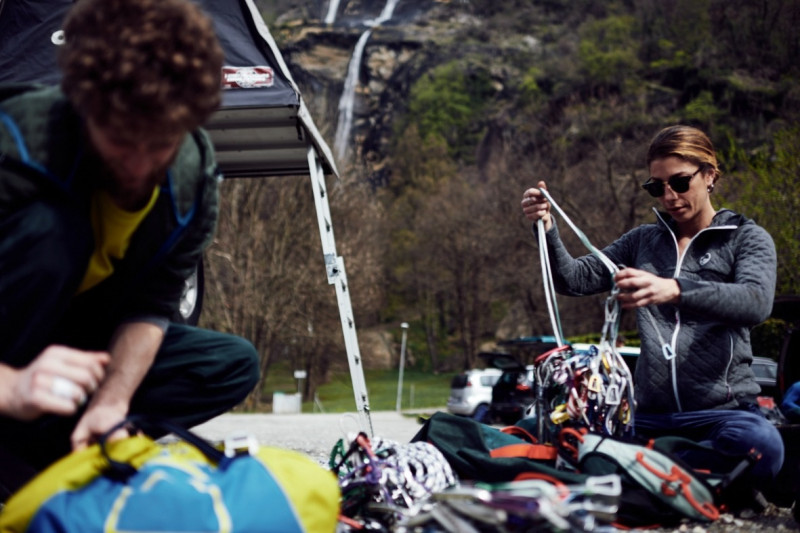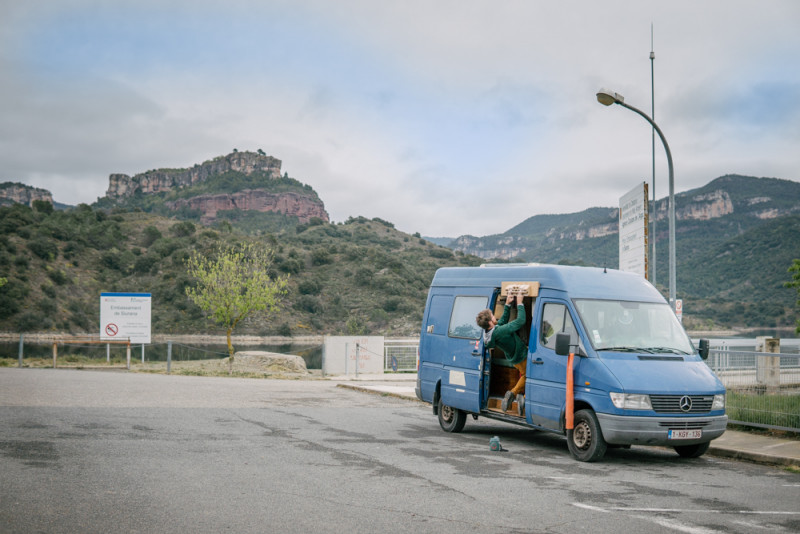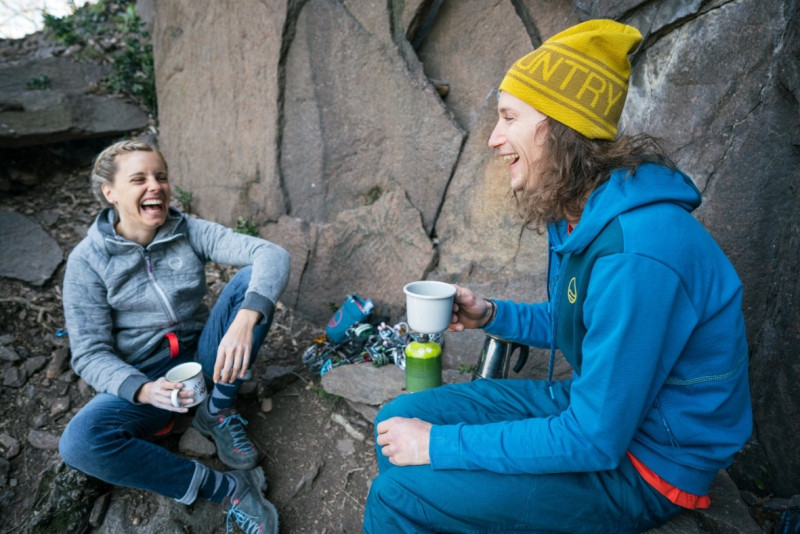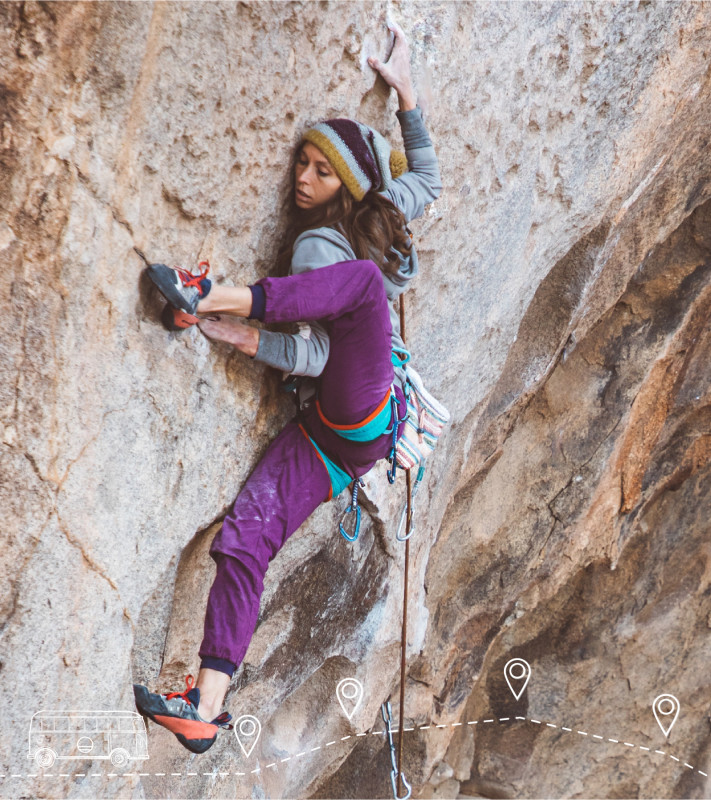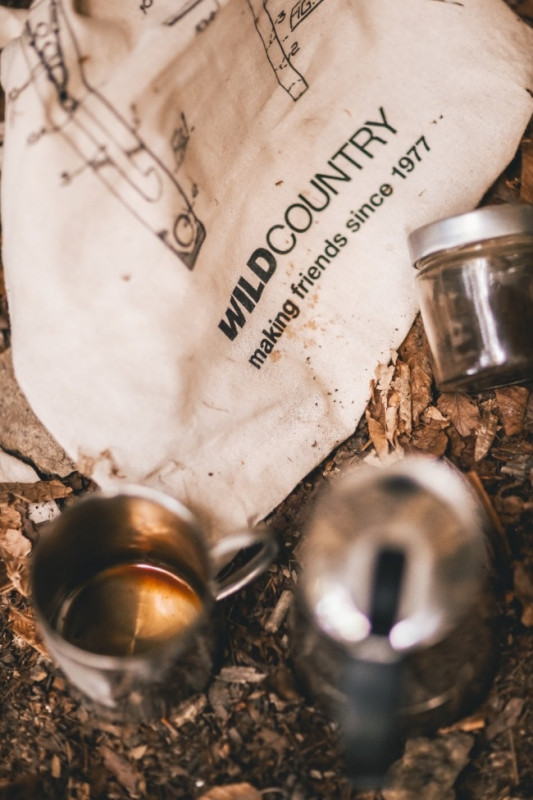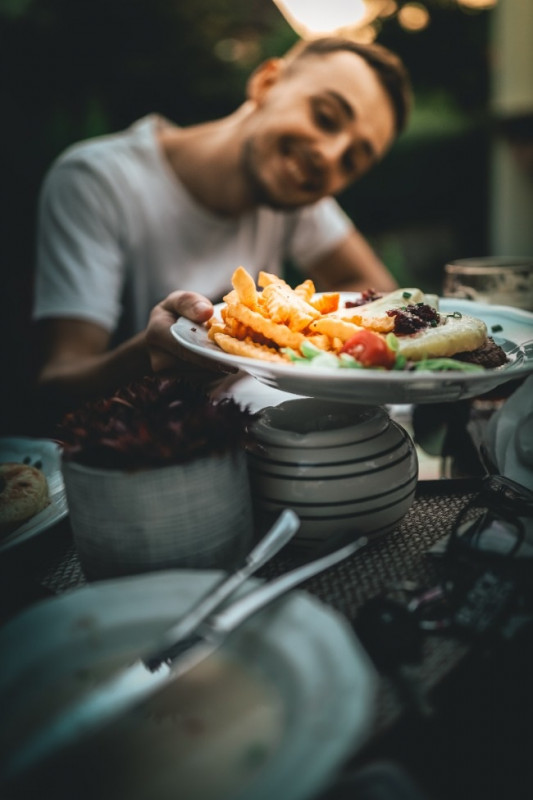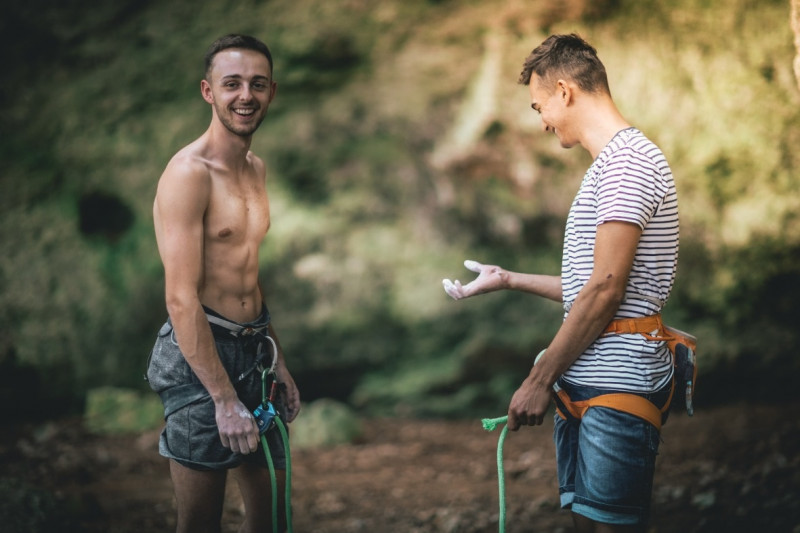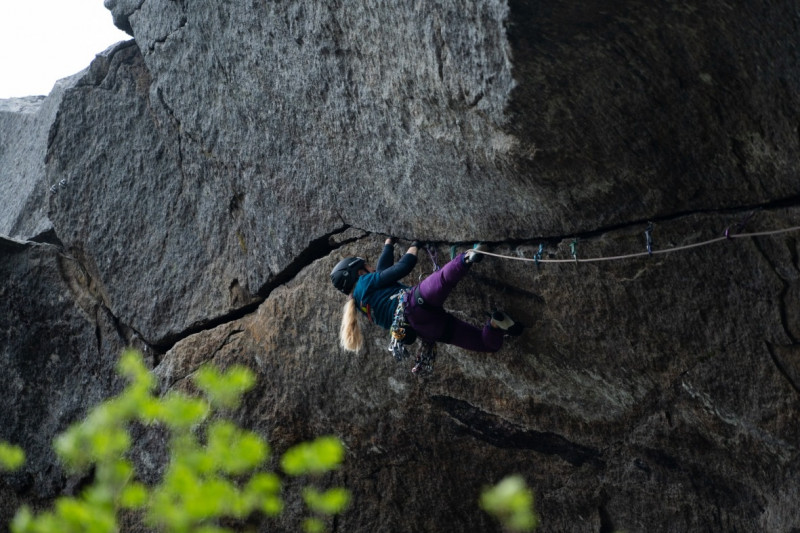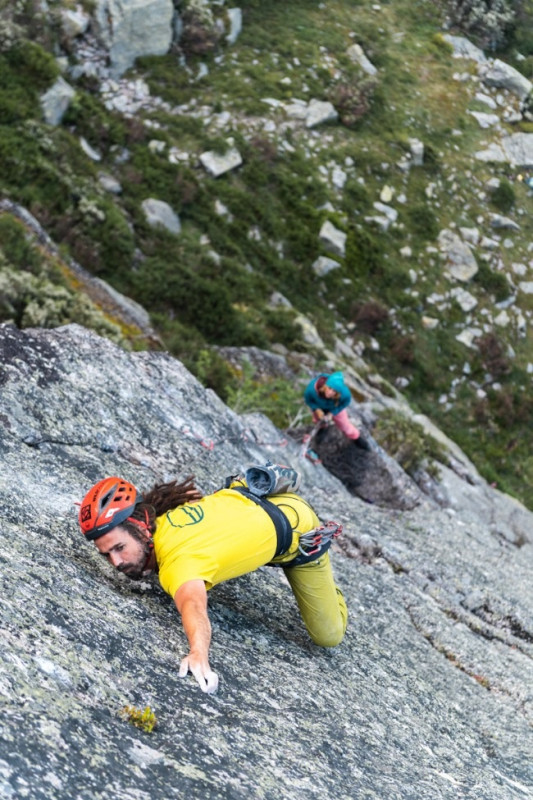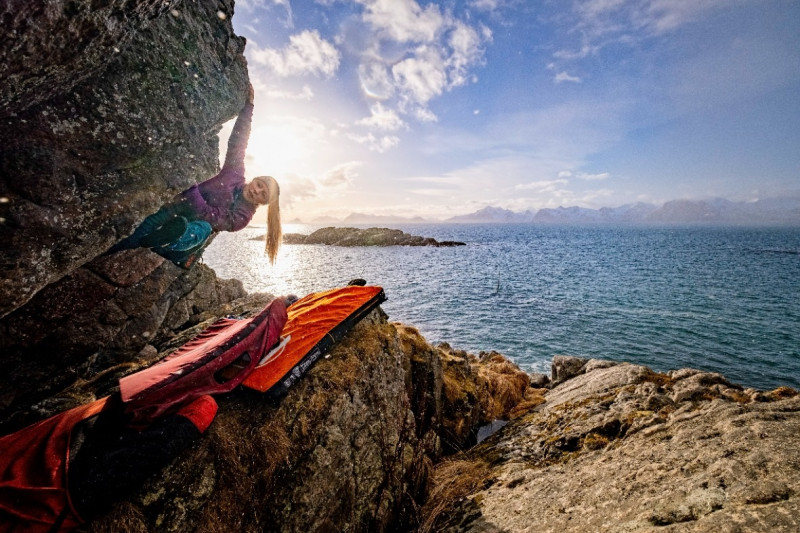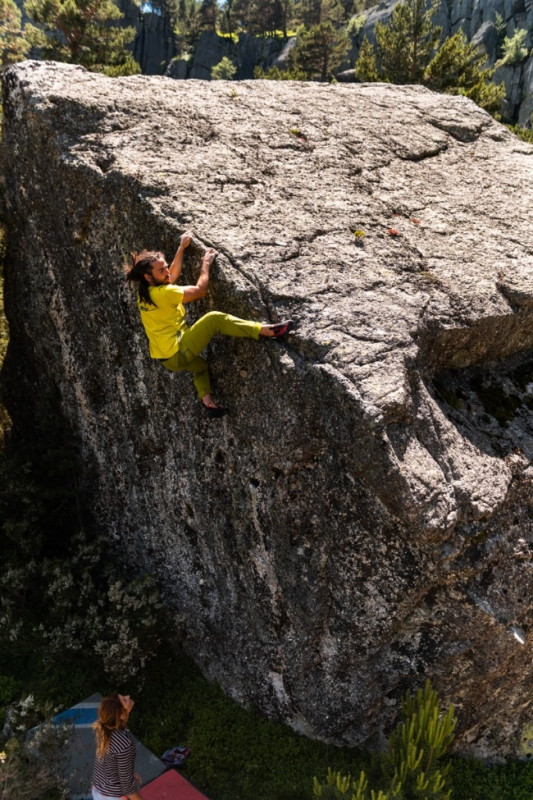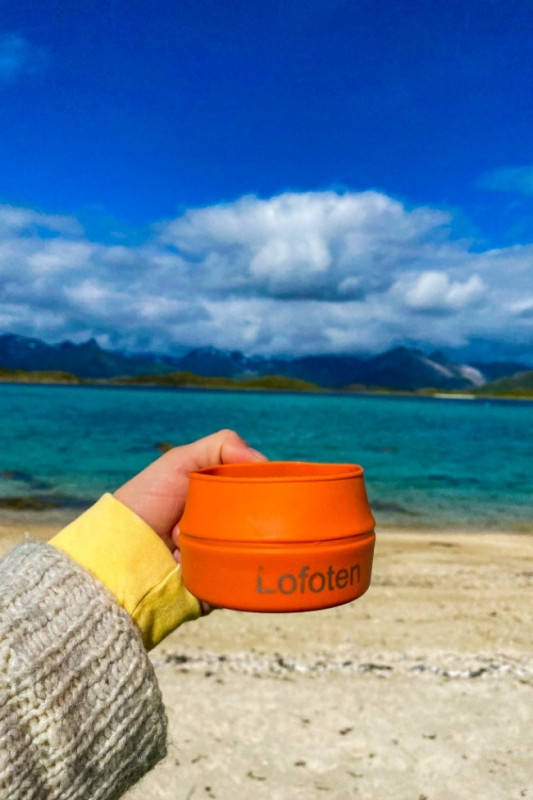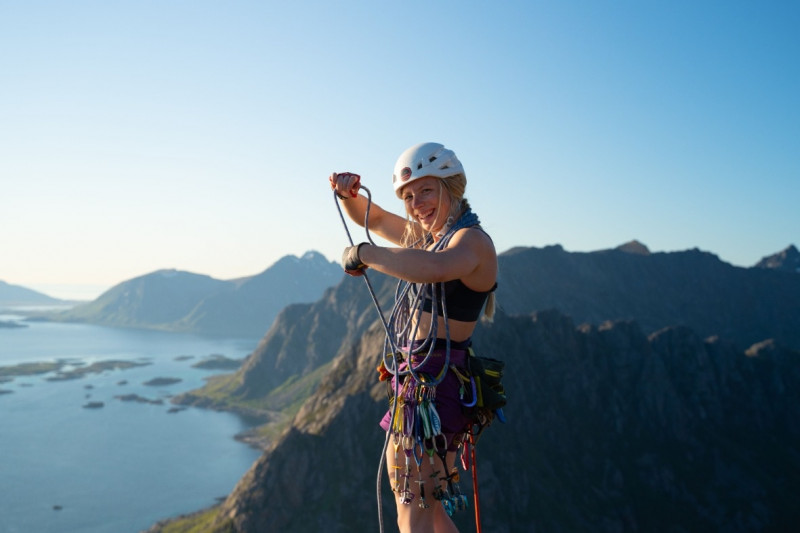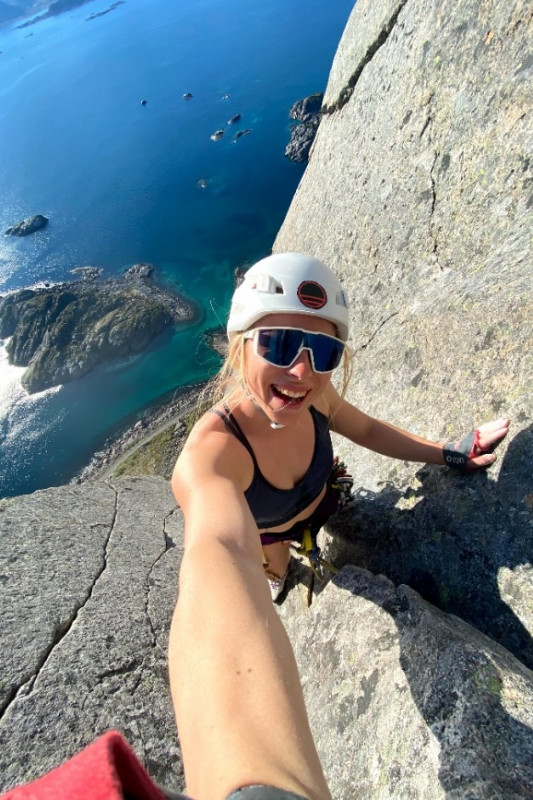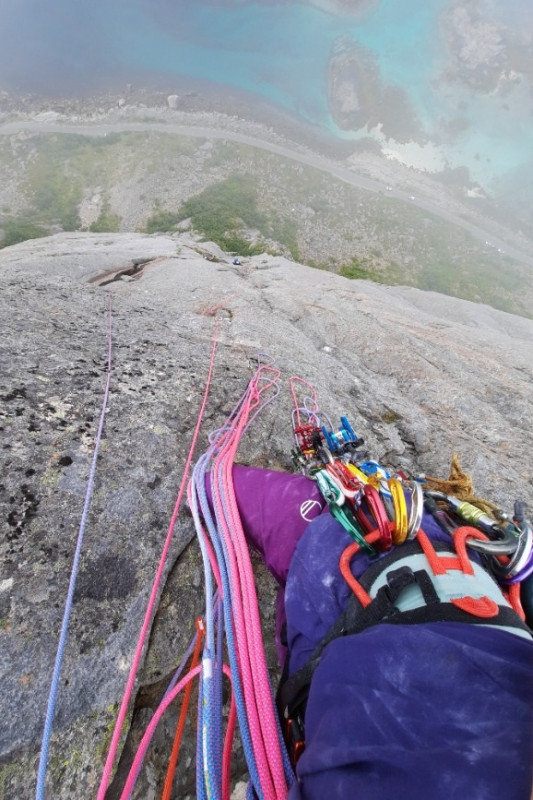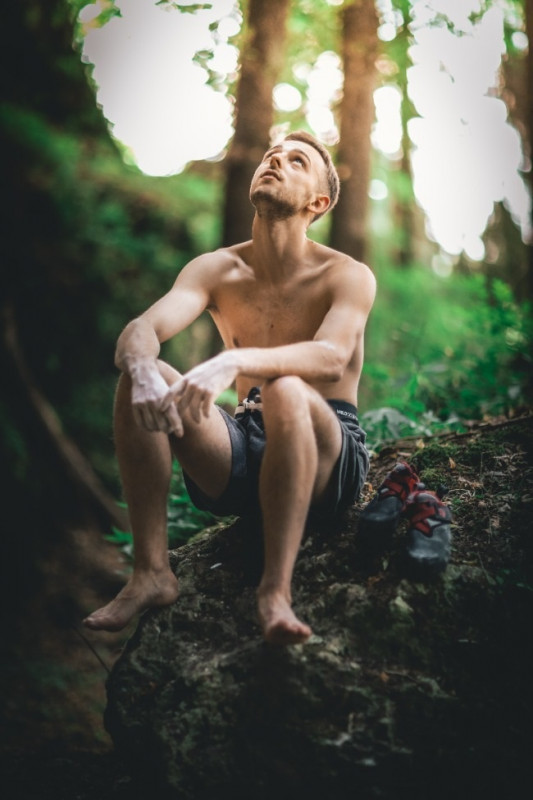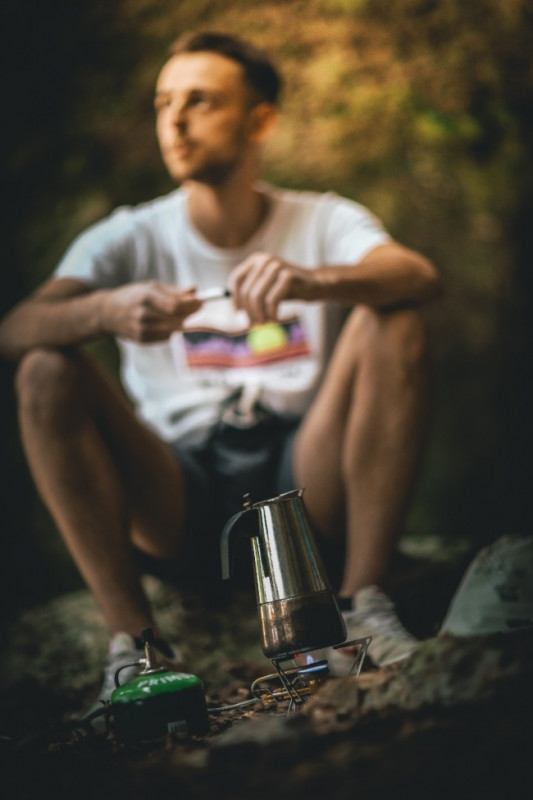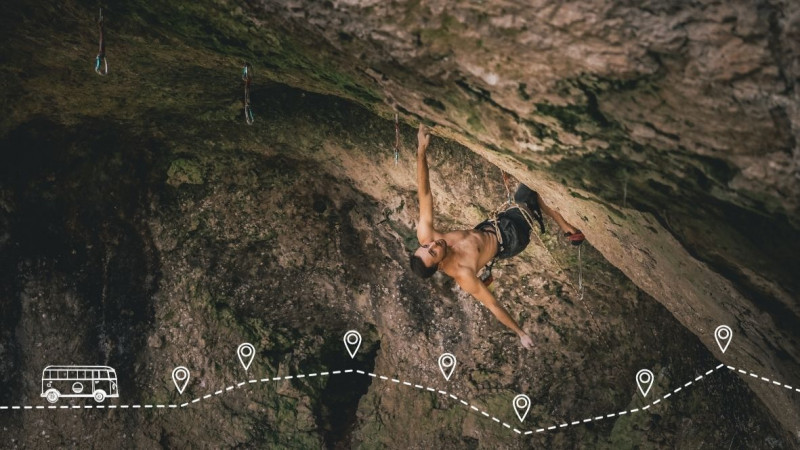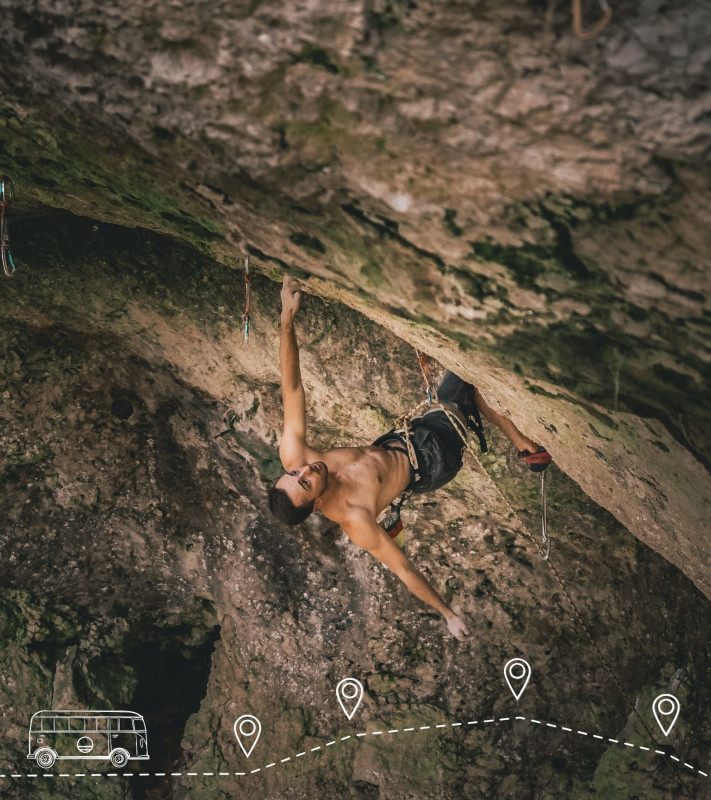This is precisely what I found when I stepped onto the route. After the initial (6c) pitch, I put my hands on what I discovered to be a 40-meter, full endurance (8b) on tuffas. This pitch is varied, technical, and pumpy. After working the moves, I knew right away I was lucky to have chosen such a beautiful route; this single pitch at any crag would be a must-do, 5-star. As I took in the rope with a smile, I could hear my second’s agreement as he worked the moves with exclamations of delight! The (7b) pitch is a long stunning colonnette, and then there are the two magnificent (8a)’s on tuffas. The easier traverse and top pitch might not deserve too much celebration, but they allow you to link between four incredible pitches.
Working on Une Jolie and figuring out every detail, I couldn’t help but remember my adventure on the Voie Petit (500m, 8b max) back in 2016. At altitude, above a glacier, and on granite, these two routes have little in common, but my process was just the same. Negotiating with my fear 300 meters up a new wall is always an intimidating position, especially my fear of failing. I had to refocus on the pleasure and enjoy it. After all, I was abandoning my kid for a full day, so I had better make it a worthwhile success.
My achievement wouldn’t come through a grade, though; for a long time, I have realized grades are all relative. At the end of the day, it doesn’t matter if it is a 9c or 7c; no one cares! It’s only climbing. It can only be for MY pleasure that I decide to put myself through fear, tiredness, and then, hope, and belief, which all turn into a passion. Of course, over the two days that I worked the route, I had quite a few moments where I despaired in figuring out a method. I also went to bed those nights, asking myself why I was doing this. But then, waking up at 5 am to beat the afternoon sun, I itched to put my hands on the rock, savored the idea that I could only rely on myself to get the rope up; this project reawakened the climber that I am.
I came home with precise sequences in my head and the knowledge that if I trained, visualized, and prepared, I had a chance to link it all. I knew training would be challenging, especially motivating for another endurance lap through the summer heat. But I was finding myself again, finding my space to be a climber and a good mum.
I returned to the route with James a month later while the grandparents took care of Arthur. Part of me wondered why we were leaving our baby, and we both felt a bit empty without him jumping around the van. But then in the early morning, I put my game face on, James transformed into Mr. Perfect Belayer, and the fun began. In the (8b), I had no idea if I had the necessary endurance, but in a month’s training, I had noticed that it was all coming back quickly. I climbed precisely without a single mistake. I have no idea how it happened–maybe being a parent and having little time forced me to improve my efficiency. The (7b), the first (8a), the (5c) it all went smoothly. Then, in the last (8a), I made a few mistakes. I forgot a few methods, and there was a moment at the very end, where I realized I had to make the right decision very fast, or I would be off, and maybe not have the energy to try the pitch again.
It is here that I faced my old friend, the fear of failing; every climber has to find a way of dealing with this. When I was a competition climber, I used to tell myself to focus closer on the pleasure of the movements. This time, with my forearms about to explode, and while I was struggling to slow my breathing on a relatively restful tuffa, I could see in my mind Arthur dancing to his favorite music. With that, I realized that falling would be ok; failing was indeed not that sad. Accepting the possibility of not doing it gave me the energy to finish the pitch and scrape my way to the belay. One more (6b), and I had done it, I was again the climber I wanted to be! I had proven to myself that there was a balance between being a mum and a climber. That even the joy of my little one could give me strength for climbing that I hadn’t had before.
I'd love to tell you James and I drove back home playing Une Jolie, but that would be too whimsically poetic. After all, ticking the climb for its name or notoriety is not the experience I was after. Plus, James hates the song, but James's story of understanding French poetry, and as I say, “truly” becoming French, is another story altogether.
Geschrieben von Moritz Welt
Fotos von Lars Decker
Stage 6- Buoux
We stayed four days at the "Auberge des Seguins," which is a perfect location to go to the crags on foot. They even let us take our dinners outside by the bedroom while the baby was already in Bed. Buoux doesn't need any publicity. It is a unique, incredible crag, and there is a reason for its Fame. Buoux is a Must visit". No matter what your level is, you will find a gem to climb!
Stage 7- Mouries
Mouries is a long way from Buoux, and we had initially planned some extra stops. But the heatwave had begun, and the other planned spots were not as exciting. So, instead of climbing stops, we biked for two days, visited an abandoned troglodyte village (les grottes de cales), and loved it!
Mouries again is an old lady, and if you can get away from requiring extremely tough grades and enjoy the technical climbing, you will love it. Mouries is a climbing lesson in itself.
Stage 8- Fontvieille secret crag
I can't tell you the secret crags, as they are secret because they aren't technically allowed. To find them you have to ask as you meet climbers on your previous days and if you are lucky they may tell you the secrets! France is full of them, and sometimes these are the best crags!
We arrived back home after 25 days of traveling and climbing. It wasn't always restful, but then living with a baby is never restful! Every day brought us load of discoveries, from a wild tortoise to incredible pains au chocolates, to meeting an old friend. Baby Arthur loved it. The minute we stepped back in the house, he was pointing again at the window, asking, "where next?" For James and me, we finish this adventure delighted to have realized that we still have so much left to explore, and it is all less than 100km from our home. This bike and climb trip is only the first!
Stell dir vor, du bist Kletterfan und lebst in Deutschland: Du arbeitest die ganze Woche und freust dich auf eine Kletterpartie am Wochenende. Der Wetterbericht sieht hervorragend aus. Nun stellt sich nur noch die Frage, wohin es gehen soll und was genau du machen möchtest. Für den Großteil der deutschen Kletter-Community ist die Antwort schnell gefunden: „Lasst uns ins schöne Frankenjura fahren, die gute regionale Küche genießen und ein paar der beliebtesten und legendärsten Routen der Welt probieren!“
Das Frankenjura ist ein ganz besonderer Ort: Es ist meine Heimat, hier wurde ich geboren, hier bin ich schon geklettert, als ich noch klein war. Dennoch frage ich mich jede Woche aufs Neue: „Welchen der 900 Felsen werde ich als Nächstes besuchen?“ Dabei überlege ich, welche klassische Route mir noch fehlt oder wo ich Inspiration für eine neue Linie finden könnte. Die Anzahl der Felsen scheint unendlich zu sein, und es gibt unzählige kleine Abschnitte, sodass es nie langweilig wird. Jedes Mal, wenn ich meine, schon alles gesehen zu haben, taucht etwas Neues auf, was erklettert und entdeckt werden will. Die schier unendlichen Möglichkeiten sind auch der Grund, warum dieser Ort so besonders für mich ist.
Es gibt nur eine Sache, die ich am Frankenjura merkwürdig finde. Ich kann nicht verstehen, wieso so viele Kletterer hierher kommen und immer wieder in denselben Abschnitten klettern, obwohl es doch so viele Möglichkeiten gibt. Ich frage mich: Mögen sie einfach den lupenreinen Felsen oder ist es etwas anderes, das dieses seltsame Phänomen befeuert? Es geht sogar so weit, dass so mancher klassischer Kletterspot völlig überfüllt ist, während 90 Prozent der Abschnitte leer sind und zunehmend verschmutzen. Damit du dieses Gebiet auch ohne Menschenmassen genießen kannst, möchte ich dir meine besten Geheimtipps für das Frankenjura verraten.
Da es wohl zu viel wäre, alle aufzulisten, kommt hier eine Auswahl:
SHARE ON
The route is a 7-pitch (8b), and 6-months after having a baby, the idea of achieving this was going to be my “I am back” diploma. When I chose it, I knew I was on my way back to fitness, and I had just figured out a rhythm where baby let me train and sleep a bit. Fitness isn’t everything, though I also needed focus, dedication, and the will to finish such a route. What I experienced as a young mum was a total shift of focus in my life. Every second of the day, part of my mind was on my little one – Does he need anything? Is he in danger? When baby Arthur was 6-months old, I couldn’t write a full text, read a book, or focus. I willingly disappeared behind “the veil of mum.” But I was hoping I would find my fully functional brain again, on top of my late abdominals.
Verborgene Kletter-Kleinode
• Hätzerkirche: Ein netter Spot mit steilen und schwierigen Kletterpassagen. Besteht aus etwa acht Routen von (7a) bis (8c+), von denen viele circa 20 Meter lang sind.
• Zauppenberger Wand: In den Tiefen der Wälder verborgen findet sich dieser 25 Meter lange Felsen, der in seiner Mitte ein großes Dach aufweist. Er setzt sich aus zehn Routen von (6b) bis (8b+) zusammen. Hier warten einige fantastische Projekte darauf, in die Tat umgesetzt zu werden.
• Eibgrat: Besteht aus zwei Felsen, die sich an den beiden Seiten des gleichnamigen Klettergebiets befinden. Der Fels an der Südseite zeichnet sich durch einfache Routen von (5) bis (7a) aus. An der Nordseite finden sich lange Routen zwischen (7a) und (9a).
• Bleisteinwand: Diese 25 Meter hohe, frisch abgesicherte Wand zeichnet sich durch herrliche Wand- und Risspassagen zwischen (6a) und (7a+) aus.
• Egloffsteiner Felsentor: Diese Wand bietet Routen, die vor allem in den Bereichen (5) bis (6) liegen, und ist mit ihren 40 Metern für Frankenjura-Standards hoch. Mit den frisch abgesicherten Routen ist sie ideal zum Sportklettern.
• Folterkammer: Inmitten des Krottenseer Forsts befindet sich dieser beliebte mittelgroße Fels, der eine große Bandbreite an Boulderrouten von (6a) bis (8b+) bietet.
• Grundfels: Dieser ganz im Osten des Frankenjuras gelegene Fels ist perfekt für harte Linien. Auf der linken Seite finden sich einige Routen im Bereich (6b), während die Hauptwand viele Juwelen zwischen (7c) und (8c) bietet.
• Clubbwall: Ein kleiner versteckter Spot in herrlicher Umgebung. Hier findest du Routen an einwandfreiem Fels zwischen (7a) und (8b+).
Kletterführer
Ich empfehle den Kletterführer Frankenjura von Sebastian Schwertner. Im Sommer wird die neue Ausgabe mit neuen und vergessenen Ecken herauskommen! Die App der Seite frankenjura.com ist auch hilfreich und immer auf dem neuesten Stand. Für ausländische Kletterfans ist der Kletterführer von Ulrich und Harald Röker zu empfehlen, der auch einige englische Übersetzungen enthält, damit die Spots einfacher zu finden sind.
Ausrüstung
Mit Blick auf die Ausrüstung kann man im Frankenjura alles finden, was das Herz begehrt. Am meisten sieht man klassisches, gut abgesichertes Sportklettern – allerdings nicht die ein Meter hohen Bolt Ladders, die man mitunter an Spots in Frankreich antrifft. Im Frankenjura setzen Kletterer Bohrhaken für den ersten Anstieg. Jeder entscheidet also selbst, wie gesichert die Route sein soll. Zudem sieht man hier eine große Palette an Techniken, angefangen vom Anfängerklettern mit vielen Bohrhaken bis hin zum Oldschool-Stil mit spärlich gesetzten Bolts. Möchtest du ältere Routen klettern, ist ein Satz Klemmkeile durchaus empfehlenswert und manchmal auch notwendig.
Klettersaison
Die besten Jahreszeiten zum Klettern im Frankenjura sind der Frühling und der Herbst, wenn es noch trocken, aber noch nicht so warm ist. Man kann hier aber auch das ganze Jahr über klettern. Im Winter haben wir es uns zur Gewohnheit gemacht, uns hinter so manchem Lowball-Boulderproblem vor Kälte und Schnee zu verstecken. Im Sommer hingegen klettern wir leichtere Routen, bei denen es weniger auf die Haftung ankommt. Wir streifen auch einfach nur durch die Wälder, um neue Projekte für die Zeit zu finden, wenn es wieder kühler ist.
DAS FRANKENJURA - KLETTERN MIT EINHEIMISCHEN
von Moritz Welt
4.0 Minuten Lesezeit
DAS FRANKENJURA - KLETTERN MIT EINHEIMISCHEN
von Moritz Welt
4.0 Minuten Lesezeit
Schlafplätze
In den vergangenen Jahren kam es vermehrt zu Ärger zwischen wilden Campern und ortsansässigen Landwirten. Aus dem Grund empfehle ich, sich einen Platz auf einem der Campingplätze vor Ort zu suchen. Als Klassiker unter Kletterern gelten der Campingplatz Bärenschlucht direkt unterhalb des berühmten Felsens, der Zeltplatz Gute Einkehr in Morschreuth und der berühmt-berüchtigte Zeltplatz Oma Eichler in Untertrubach.
Wer sich etwas mehr Komfort wünscht, kann am Ort seiner Wahl auch leicht eine schöne Ferienwohnung finden. Für das ultimative Frankenjura-Feeling empfehle ich einen Besuch der zentral gelegenen Orte Egloffstein und Gößweinstein. Manche der unten stehenden Gaststätten vermieten auch schöne Zimmer.
Essen, trinken und lokale Kletterer treffen
Das Frankenjura ist für seine Biere und Gerichte wie Schäufele und Forelle fränkischer Art bekannt. Überall finden sich lokale Brauereien und Wirtshäuser. Wo es sich einzukehren lohnt:
• Held Bräu in Oberailsfeld
• Gasthof Seitz in Bernheck
• Gasthof zum Signalstein in Hundsdorf
• Gasthof Mühlhäuser in Wannbach
Schließe dich unserer Weekend Warrior-Reise für Insider-Tipps und Geschichten aus aller Welt an. Den ganzen Sommer lang bieten wir dir wöchentlich neue Episoden und spannende Reiseziele.
Where to sleep
The most popular tent spots are next to the Gandalf wall and on Kalle. Both are within walking distance to some of the must-do routes I mentioned above and have individual benefits. Camping next to Gandalf allows you to be within walking distance to Henningsvær, where you can grab some food, beer, or ice cream between climbing. While at Kalle, you can benefit from the new toilet and showers and enjoy a beautiful little beach next to the camp. No matter where you camp, remember Lofoten is a busy tourist spot with a lot of traffic in nature. So, please do your part in helping to keep it beautiful and always leave your camp spot how you found it, or better yet, more pristine, even if that means picking up after others who left things behind.
Eat Drink and Meet Local Climbers
After a long day climbing, nothing tastes better than a beer and a burger in Henningsvær. I suggest Klatrekafeen, where you are sure to meet other climbers so you can share your successes for the day, or sit and listen to stories and some live music. If the weather is nice, you can't miss out on eating pizza at Trevarefabrikken, where you can enjoy the midnight sun and dance all night!
For more insider tips and stories from around the world, join our Weekend Warrior journey as we release new episodes and destinations each week through summer 2021.

